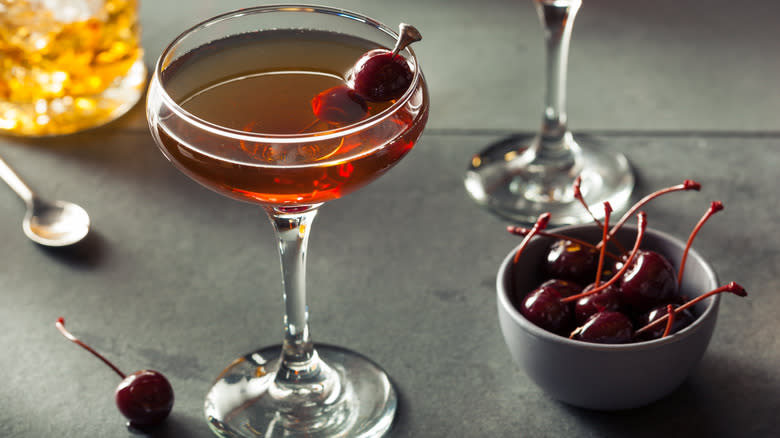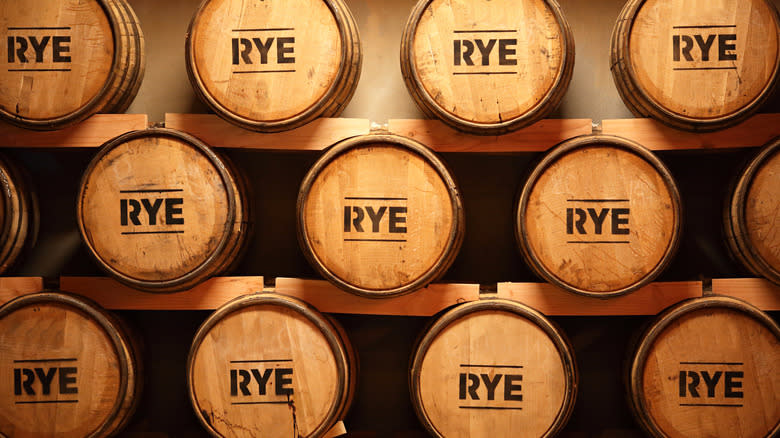Black Manhattan: The Bittersweet Take On A Classic Cocktail

Most cocktail devotees know the Manhattan, whether through personal experience or its appearance in films such as 1959's "Some Like It Hot." In the train scene of the movie, Marilyn Monroe and co-stars Jack Lemmon and Tony Curtis sip what's now known as a Classic Manhattan from a disposable paper Dixie cup. The drink has come a long way since then, and today it's most often served in fancy cocktail glasses to those with so-called sophisticated palates.
It's important to note that the Classic Manhattan, similar to the one reportedly imbibed by financial titan J.P. Morgan at the close of every trading day, leans heavily on the word "classic." Self-professed "real" Manhattan drinkers typically frown upon deviations, except for perhaps one exception: the Black Manhattan. That's because it involves just two ingredient swaps: one involving the bitters, and the other appealing to those favoring a more bittersweet take on the classically sweet cocktail. As long as everything else remains essentially the same, a begrudging hat-tip ensues.
Here's what that acceptable swap-out entails. The Classic Manhattan cocktail comes from a good shake-up of rye whiskey, sweet vermouth, aromatic Angostura bitters, and a maraschino cherry garnish. The now-lauded Black Manhattan drops the sweet vermouth for a bittersweet Averna amaro. The bitters alteration is a split one; the Angostura bitters are typically joined by a dash of citric orange bitters.
Read more: 13 Liquors Your Home Bar Should Have
The Birth And Evolution Of A Classic Cocktail

Like most modern-day cocktails, the Classic Manhattan likely came from a bar -- in this case, one named The Manhattan Club in New York City. But this origin tale has many iterations, the most enduring ones involving the tinkerings of a curious bartender, an ambitious bar patron, or, even more fantastically, by or for the mother of Sir Winston Churchill. Though none are proven -- and the Churchill version has been debunked entirely -- the Manhattan does appear to date back as far as the 1860s in New York City.
The birth of the cocktail's offspring, the Black Manhattan, is a bit more precise. Roughly 150 years after the first reported origins of the Classic Manhattan, the Black Manhattan apparently came to life in 2005 at the hands of bartender Todd Smith. General consensus notes that it happened at the Bourbon & Branch establishment in San Francisco. By replacing the traditional sweet vermouth with the bittersweet Averna amaro, the drink flourishes as a richer, more complex cocktail that takes on heavier herbal qualities and caramel notes from the Italian amaro.
Some bartenders, whether making a classic or black version, now creep further over established lines by replacing the rye whiskey with bourbon. This generally tones down the spicy characteristics of rye whiskey, resulting in a smoother glide over the palate. In addition, many upscale bars eschew the candy-sweet maraschino in favor of a brandied cherry, which tops things off with a boozy hint of rich complexity.
Read the original article on Tasting Table.

